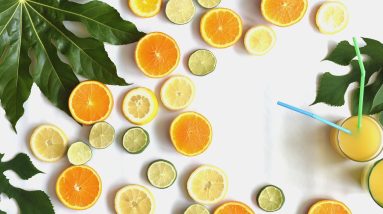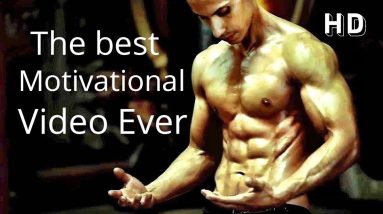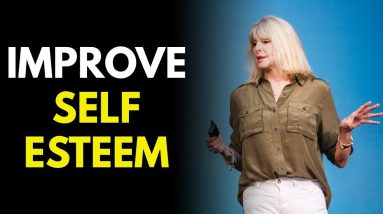
Hadi Choopan’s Intense Leg Training Regimen Just 10 Weeks Away from the 2023 Mr. Olympia Competition
Hadi “The Persian Wolf” Choopan is the reigning Mr. Olympia. He will attempt his first title defense at the 2023 Olympia in Orlando, FL, on Nov. 2-5, 2023. Choopan uses high-volume training to build his lower body, which he hopes converts him to his second Sandow trophy.
On Aug. 27, 2023, Choopan published a video on his YouTube channel that featured his leg training 10 weeks ahead of the biggest bodybuilding competition in the world. Watch the workout below:
[Related: Bodybuilder Jason Lowe’s Full Day of High Carbs & Cheat Meals]
Hadi Choopan’s Olympia Leg Workout
Below is The Persian Wolf’s workout, along with his training methodology.
- Single-Leg Leg Extensions
- Seated Leg Extensions
- Machine Hip Adduction
- Barbell Walking Lunges
- Leg Press
- Smith Machine Leg Press
- Sumo Deadlifts
- Deadlifts
- Seated Leg Curls
[Related: Bodybuilding Legend Frank Zane’s 3-Month Contest Prep Guidelines]
Extensions & Adduction
Choopan starts with leg extensions to train his quads. Adding single-leg extensions (also known as unilateral leg extensions) to the mix helps him quell muscle imbalances in his legs, which ideally promotes symmetry to his aesthetic.
He then performed reps on the adduction machine to work the inner thighs. Thickening the inner thigh prevents a thigh gap from disrupting the flow of a physique on stage during poses like the front or back double biceps.
Lunges & Leg Presses
Lunges are unilateral movements that bias the quads depending on how far the knee tracks over the toes. Choopan gets sufficient knee flexion during each lunge, meaning his quads are training in a lengthened position while simultaneously improving his stability and core.
View this post on InstagramA post shared by EVOGEN NUTRITION by HanyRambod (@evogennutrition)
Choopan uses the Smith machine as his leg press. By positioning vertically under the machine’s barbell, Choopan can continue to load tension on his quads.
Deadlifts
Choopan finishes with two variations of deadlift – sumo and traditional – and seated leg curls to load his hamstrings and lower back. Sumo deadlifts place less tension on one’s posterior chain than a conventional deadlift but provide improved glute activation.
Slow Eccentrics
Choopan’s leg training techniques are aimed at the desired effects of improved aesthetics and size. One such technique is a slow, controlled eccentrics (also known as the negative). He pairs this with explosive – yet still controlled – concentrics (i.e. the contraction).
Choopan’s training maximizes time under tension and intensity without conceding form. By ensuring every rep achieves requisite muscle activation, that stimulus should lead to better growth.
High Volume & Weight Distribution
Another technique Choopan uses is a massive amount of volume — each set is in the 12-20 rep range. He mixes and matches weight depending on the movement. For barbell exercises, such as walking lunges and deadlifts, he trains lighter. Conversely, on machines, he more liberally loads the weight plates, as he did on his leg press of 900 pounds.
View this post on InstagramA post shared by EVOGEN NUTRITION by HanyRambod (@evogennutrition)
Throughout the video, Choopan trains in silence, hyper-focused on his main goal: bringing his best physique to the 2023 Mr. Olympia stage to ward off title contenders, such as 2022 Olympia runner-up Derek Lunsford and the third-place finisher Nick Walker.
Featured image: @hadi_choopan on Instagram
The post Hadi Choopan’s Leg Training 10 Weeks Out From the 2023 Mr. Olympia appeared first on BarBend.

The Hidden Dangers of Mixing Alcohol with Your Pre-Workout Routine
If you were a teenager or young adult in the latter half of the ‘aughts, you were probably aware of (or partook in) the infamous Four Loko drink. The “premium malt beer beverage” was all the rage among partiers at the time.
Why? The original Four Loko formulation bore a remarkable resemblance to the ingredients you’d find in a typical pre-workout powder: Namely, more than a scant amount of caffeine. By 2009, Four Loko was under fire from the media and government regulators alike for bucking public health policy. (1)
 Credit: Ollyy / Shutterstock
Credit: Ollyy / Shutterstock
One year later, the Food & Drug Administration issued a ban on caffeinated alcoholic beverages (forcing Four Loko to alter their formulation as well). (2) Whether you were privy to the Four Loko lore or not, the story stands as a sharp reminder of the consequences of mixing what was essentially pre-workout with alcohol. Before you spice up your next gym session with caffeine and a cold one, there are a few things you should know.
Editor’s Note: The content on BarBend is meant to be informative in nature, but it should not be taken as medical advice. When starting a new training regimen and/or diet, it is always a good idea to consult with a trusted medical professional. We are not a medical resource. The opinions and articles on this site are not intended for use as diagnosis, prevention, and/or treatment of health problems. They are not substitutes for consulting a qualified medical professional.
Side Effects of Mixing Pre-Workout With Alcohol
Strictly speaking, alcohol and fitness tend to have an antagonistic relationship. As the saying goes, the dose makes the poison — however, there isn’t much ground to gain in the gym by pounding a hard beverage before hitting the weights.
[Read More: The Best Foods for Energy Before, During, and After Your Workouts]
This is doubly true if you habitually consume pre-workout supplements to boost your performance in the weight room or on the track. Caffeine, the principal active ingredient in most pre-workouts, can have a number of harmful interactions with alcohol:
- Alcohol and caffeine produce what some experts have called a “wide-awake drunk,” (2) which dampens your perception of inebriation until the immediate effects of caffeine (or your pre-workout) have worn off. (6)
- Both caffeine and alcohol are diuretics; they increase the rate at which your body sheds water. (3) This may impact workout performance, but could depend on the amount of alcohol consumed before a workout. Low-alcohol-content beverages may not significantly dehydrate you. (4)
- Many popular pre-workout ingredients are designed to sharpen reaction time and muscular coordination, but alcohol diminishes them. (5) This could mean that combining pre-workouts with alcoholic beverages reduces some of the performance-enhancing benefits of the former, but more specific data is needed to confirm.
Note that there’s a very limited amount of research specifically studying the interactions and consequences of name-brand pre-workout powders and alcohol. Caffeine is far and away the most widespread and potent ingredient in most ‘pres, though, so it’s pretty safe to infer based on data studying caffeine and alcohol. (6)
What Is Pre-Workout?
If you like to hit the gym recreationally or as part of training for a sport, you’re probably aware of pre-workouts. They’re all the rage for gym rats as a quick way to enhance energy levels, boost mood, and increase performance.
[Read More: The Gymgoer’s Guide to Whey Protein]
Pre-workouts are typically sold in powder form but may also come in capsules or even as edible snacks. Almost all ‘pres contain some combination of these active ingredients (though specific products may contain more or different profiles): (7)
- Caffeine
- Beta-alanine
- Citrulline
- Tyrosine
- Taurine
- Creatine
Effects of Pre-Workout
Effects of pre-workout vary depending on a host of factors including their blend of ingredients and, more importantly, your personal tolerance level to substances like caffeine.
Some can inject you with a mild dose of energy, while, if you’re new to taking them, can make you feel like Popeye himself after downing a can of spinach. However, like any supplement, they aren’t without side effects.
Positive Effects
There’s conflicting evidence behind the viability of pre-workouts for tangible increases in performance, specifically weight lifting. Some data has shown little difference between taking a ‘pre and a placebo (7) regarding force production.
However, other studies have made much stronger claims, with some even considering moderate-to-high doses of caffeine (in the form of an energy drink) “necessary to significantly improve maximal muscle power.” (8)
[Read More: The 12 Best Supplements for Muscle Growth]
Pre-workouts that contain caffeine also increase athletic focus and initiative, according to some studies. (9) A pre-workout may be especially potent if you’re running on limited rest from the night before. (10)
Negative Effects
Pre-workouts also come with a host of side effects, particularly due to their high caffeine content. (10) You may experience excessive sweating, headaches, jitters or irritability, or an aggressive tingling sensation (if you’re working with a product that contains beta-alanine). (11)
What Is Alcohol?
Alcohol is an organic compound in which a hydroxyl group is bound to a carbon atom. Duh. For anyone who isn’t a career chemist, alcohol is a drug. Strictly speaking, it is a depressant, though everyone reacts to alcohol a bit differently.
Effects of Alcohol
Most adults know what it feels like to consume too much alcohol — stumbling, slurred speech or vision, impaired judgment and a gnarly hangover the next day are among common side effects of booze.
That isn’t to say that alcoholic beverages are universally negative. There’s some substantiated research that alcohol consumption may improve some heart health markers. In the immediate, it also blunts pain perception. (12)
 Credit: Longfin Media / Shutterstock
Credit: Longfin Media / Shutterstock
[Read More: The Best Healthy Fast Food Options at the Most Popular U.S. Chains]
Regarding alcohol and exercise, one systematic review reported on chronic mild alcohol consumption and found that it has a limited negative effect on body composition, performance, and recovery. (13) However, other data shows deleterious effects on testosterone levels and other hormonal or metabolic markers. (14)
Many of the positive (or negative) findings on alcohol and physical activity acknowledge that side effects are extremely dose-dependent. In short, a beer before or after a workout probably won’t do you much harm, but a few glasses of hard liquor definitely won’t do you any favors in the squat rack.
Your Takeaways
The Four Loko fiasco highlighted the very real consequences of haphazardly chucking proven ergogenic (that is, performance-enhancing) ingredients into an alcoholic beverage.
That said, it also provides an important history lesson; you should be wary of mixing “uppers” with “downers,” even if you’re preparing for a leg workout instead of a backyard barbecue or a night on the town.
- Mixing alcohol and a pre-workout may inhibit the performance-enhancing effects of the pre-workout supplement.
- You’re likely to experience noticeable dehydration, as both caffeine and alcohol are diuretics.
- The negative performance outcomes of alcohol are largely correlated with dosage and consistency of consumption.
- Alcohol has some beneficial health effects (if consumption is modulated), but there’s little suggesting that it’s a wise choice to include as part of your pre-gym ritual in any capacity.
FAQs
Before you pour up and chug down, check up on these common questions (and answers) about mixing pre-workout with alcohol.
You can, but it may not be a wise idea. Limited, low-ABV alcohol may not dampen the effects of your workout, but moderate or high alcohol consumption in tandem with pre-workout consumption can have negative side effects.
Is it bad to mix caffeine and alcohol?
Yes, if you consume too much of either (or both). Caffeine and alcohol are both diuretics, meaning they dehydrate you. Caffeine also inhibits some of the proprietary sensations of alcohol, meaning you may not notice how intoxicated you are.
What is the difference between a pre-workout and alcohol?
Pre-workouts are fitness supplements designed to enhance performance. Alcohol is a depressant, a drug typically consumed through liquids for recreational purposes.
References
- Hughlett, Mike (August 24, 2009). “Caffeinated alcoholic drinks stir up legal concerns”. Chicago Tribune.
- Cohen, Elizabeth; Young, Saundra; Smith, Matt (November 17, 2010). “FDA calls 7 caffeine-alcohol drinks unsafe”. CNN.
- Stookey J. D. (1999). The diuretic effects of alcohol and caffeine and total water intake misclassification. European journal of epidemiology, 15(2), 181–188.
- Castro-Sepulveda, M., Johannsen, N., Astudillo, S., Jorquera, C., Álvarez, C., Zbinden-Foncea, H., & Ramírez-Campillo, R. (2016). Effects of Beer, Non-Alcoholic Beer and Water Consumption before Exercise on Fluid and Electrolyte Homeostasis in Athletes. Nutrients, 8(6), 345.
- Ranieris, Joseph N. “Alcohol and Working Out: How Does Drinking Affect Your Body?” Discovery Institute NJ. 28 February 2023.
- Ferré, S., & O’Brien, M. C. (2011). Alcohol and Caffeine: The Perfect Storm. Journal of caffeine research, 1(3), 153–162.
- Tinsley, G.M., Hamm, M.A., Hurtado, A.K. et al. Effects of two pre-workout supplements on concentric and eccentric force production during lower body resistance exercise in males and females: a counterbalanced, double-blind, placebo-controlled trial. J Int Soc Sports Nutr 14, 46 (2017).
- Del Coso, J., Salinero, J. J., González-Millán, C., Abián-Vicén, J., & Pérez-González, B. (2012). Dose response effects of a caffeine-containing energy drink on muscle performance: a repeated measures design. Journal of the International Society of Sports Nutrition, 9(1), 21.
- Cook, C., Beaven, C. M., Kilduff, L. P., & Drawer, S. (2012). Acute caffeine ingestion’s increase of voluntarily chosen resistance-training load after limited sleep. International journal of sport nutrition and exercise metabolism, 22(3), 157–164.
- Eudy, A. E., Gordon, L. L., Hockaday, B. C., Lee, D. A., Lee, V., Luu, D., Martinez, C. A., & Ambrose, P. J. (2013). Efficacy and safety of ingredients found in preworkout supplements. American journal of health-system pharmacy : AJHP : official journal of the American Society of Health-System Pharmacists, 70(7), 577–588.
- Dolan, E., Swinton, P. A., Painelli, V. S., Stephens Hemingway, B., Mazzolani, B., Infante Smaira, F., Saunders, B., Artioli, G. G., & Gualano, B. (2019). A Systematic Risk Assessment and Meta-Analysis on the Use of Oral β-Alanine Supplementation. Advances in nutrition (Bethesda, Md.), 10(3), 452–463.
- J Ryan Scott, MPH and others, Moderate Alcohol Consumption Is Associated with Reduced Pain and Fibromyalgia Symptoms in Chronic Pain Patients, Pain Medicine, Volume 19, Issue 12, December 2018, Pages 2515–2527
- Wynne, J. L., & Wilson, P. B. (2021). Got Beer? A Systematic Review of Beer and Exercise. International Journal of Sport Nutrition and Exercise Metabolism, 31(5), 438-450.
- Sierksma, A., Sarkola, T., Eriksson, C. J., van der Gaag, M. S., Grobbee, D. E., & Hendriks, H. F. (2004). Effect of moderate alcohol consumption on plasma dehydroepiandrosterone sulfate, testosterone, and estradiol levels in middle-aged men and postmenopausal women: a diet-controlled intervention study. Alcoholism, clinical and experimental research, 28(5), 780–785.
Featured Image: Ollyy / Shutterstock
The post Pre-Workout and Alcohol: The Risks You Need To Know appeared first on BarBend.

Discover the Incredible Benefits of Cycling: Unveiling the Muscles That Get a Workout
If you noticed some extra definition in your lower body since you’ve hopped in the saddle, you might wonder, What muscles does cycling work?
After seeing years of headlines warning that “sitting is the new smoking,” it might require a little suspension of disbelief to consider that you can get in the best shape of your life while largely parked on your butt.
But that’s what cycling, a surprisingly comprehensive workout, can provide.
“Cycling builds muscle and improves endurance,” says John Gardner, an NASM-certified personal trainer. It’s a serious calorie burner, which can help you lose fat and slim down overall.
“While the most difference will appear on the lower body muscles — as most of the pedaling power comes from those muscles — your core can get toned, too,” he adds.
Cycling works your cardiovascular system as well as your lower body. Here’s how.
1. Heart

First, a good bike workout can strengthen the most vital muscle of all.
“Cycling is a cardiovascular exercise, so that means you’re going to burn calories and strengthen your heart and lungs while you do it,” says Melanie Melillo, CPT.
But in terms of the muscle groups you can see, cycling mainly works the lower body, particularly the legs. Cycling indoors with a bike that provides varying resistance can help you focus on these areas.
“When you’re an indoor cyclist, because of the resistance on the flywheel, you’ll shape and tone your legs, creating definition in your quads, calves, and glutes,” says Melillo.
2. Quadriceps

As your legs cycle, you slightly straighten your legs to push the pedal down. That engages the quadriceps, says Gardner. Your quads are the four muscles that line the front and sides of the thigh.
As both hip flexors and knee extensors, they’re super-functional; strengthening them can help support those major joints.
And because the quads comprise the biggest muscle group in your body, building them can have visible benefits.
3. Hamstrings

As you bend your knees and pump away, you work the hamstrings muscles — those on the backs of the thighs — which provide force to push against the pedals, says Gardner.
And if you have clip-in pedals, you place slightly more emphasis on the hamstrings and hip flexors by more actively pulling up with each pedal stroke.
4. Calves

As you pedal downward, the calves power the action, collaborating with the hamstrings and quadriceps to push against the pedal and stabilize the foot, says Gardner.
On the stability front, doctors and trainers often prescribe cycling to people who are recovering from knee injuries or whose knees are bothered by joint disorders like arthritis.
“I highly recommend cycling to my patients,” says Siddharth Tambar, MD, a board-certified rheumatologist in Chicago who specializes in the non-surgical treatment of neuromuscular problems.
“Cycling recruits the gluteus, quadriceps, thigh, and calf muscles. Strengthening these muscles has a stabilizing effect on the knees, decreasing knee instability, weakness, and injury,” Tambar explains.
5. Glutes

When cycling, your hips rotate, which engages the glutes; they allow the pelvis to stay stable on the bike, says Gardner. The motion and resistance can strengthen this aesthetically crucial muscle group.
“The stronger your glutes are, the perkier they are,” says Melillo. “And we all know these days, the more shapely the booty, the better.”
An important note: Don’t shift your butt out of alignment to try to further engage those muscles; that can be dangerous, says Melillo.
“If you stick your butt out further, are you going to get more glute work? No,” she says. “You can actually hurt yourself. The more efficient you get at riding, the more resistance you can turn on, and the stronger you’ll get overall. Your glutes work as much as they need to work when you’re in the proper cycling position.”
6. Core

“Surprisingly, indoor cycling is a complete core workout,” says Karen Maxwell, an ISSA-certified sports nutritionist and master instructor for CycleBar in Denver, Colorado. “Your core stabilizes you; it’s your central place of balance and power. The more still the upper body is and with a tight core, the better.”
Functional Fitness
But cycling’s benefits can be more significant than any individual muscle group. “It’s really about the functional [fitness] that you bring to every other aspect of your life,” says Melillo.
“When you have more muscular endurance in your legs, you’re going to be able to enjoy the rest of your life without fatiguing as quickly. You’ll be that person who, when somebody says, ‘Hey, you want to go for a hike?’ or, ‘Let’s go for a walk,’ you’ll be able to do it because you’ll have that foundation. It brings a lot to just general quality of life,” she explains.
The post What Muscles Does Cycling Work? Here’s What Your Workouts Are Doing for You appeared first on BODi.

Powerlifting Phenom Jesus Olivares Reveals Four Game-Changing Squat Technique Tips for Maximum Weightlifting Performance
Many lifters that squat in the gym don’t simply want to “train their legs,” they want to get stronger and move serious weight, as well. Jesus Olivares knows a thing or two about squatting a lot of weight. As a matter of fact, he knows at least three things.
Not only has Olivares squatted over 1,000 pounds three times in powerlifting competition — always lifting raw, breaking the barrier twice in the same meet — but he’s willing to share his knowledge with his 138,000 plus followers on Instagram. In a recent post, he shared a total of four tips that he applies to every squat he performs in training or competition.
View this post on InstagramA post shared by Jesus Olivares (@mega.gojira)
More from Breaking Muscle:
- Back Squat vs. Front Squat: Which, When, and Why
- Learn How to Build Strength with Three Key Principles
Find Your Best “Shelf”
When Olivares referred to the shelf, he’s talking about where the bar would be sitting on his upper back and shoulders.
“The “shelf” is the first point of contact between you and the bar. It’s going to determine a lot such as bar placement and bar path … Whatever you decide, I urge [you] to find the perfect combo between stability and comfort, sometimes you can’t have both. So pick whichever you prioritize!”
He went on to talk about three positions that the barbell could be placed on the shoulders — low, mid, and high. Olivares could be considered a low-bar squatter based on his personal lifting style. He explained that the goal should be to flex your back around that placement for comfort and stability.
He also emphasized hand placement so the bar can be kept in place throughout the lift. The goal should be a balance between comfort and stability. You may have to compromise one to emphasize the other, according to the 120-kilogram-plus athlete who holds the All-Time World Record powerlifting total.
Have a Strong, Stable Walkout
Wasting time and energy is counterproductive when it comes to the squat. Lifting the bar from the rack, and then taking several steps to walk it out, and then trying to adjust while the weight settles can not only make the attempt harder, it could lead to injury.
Olivares advocates for a short and sweet pick and settling of the weight before going down into the hole. Take no more than four steps to get into position and make sure the bar is stable on your back.
“This is a game of efficiency and proficiency. Be patient but do not take any more time than what you need … Practice makes improvement.”
If you’re making an attempt in competition, then you don’t have much time to do this. Practicing with lighter weights in training would be a wise move.
Breathe and Brace Correctly
The squat is always associated with leg training, but it really is a full-body movement. Your legs are the primary driver, but Olivares emphasized the importance of a strong and dependable core to transfer power and improve overall technique.
“Bracing isn’t just flexing your abs but also incorporating obliques and mid/low back. The action of engaging your entire midsection is what will protect your low back while also creating the rigidity you require.”
View this post on InstagramA post shared by Jesus Olivares (@mega.gojira)
More from Breaking Muscle:
- The 20-Rep Squat Program for Old School Size and Strength
- How to Eat More for Muscle and Strength Gains
Bonus Tip: Time Your Descent to Explode Out of the Hole
Whether you’re in the gym or on the platform, you don’t want to be under the bar any longer than necessary. Taking a long negative can show control, but it can also zap the body of energy. Olivares isn’t getting paid by the hour when he competes. Even though he wants to be in control throughout the rep, he wants to get down and up as quickly as possible so he builds tightness as he lowers into the bottom position before “blowing up” to rise out of the hold.
” … you feel your internal pressure increase as you go into the hole of the squat and at your lowest and deepest point is where you’ll feel the most pressure. It is at this point where you want to time the reversal of momentum to help you on your way up!”
Jesus Olivares — All-Time Raw Competition Bests (+120KG)
- Squat — 470 kilograms (1036.1 pounds)
- Bench — 272.5 kilograms (600.7 pounds)
- Deadlift — 410 kilograms (903.9 pounds) — IPF World Record
- Total — 1,152.5 kilograms (2,540.8 pounds) — IPF All-Time World Record
Olivares last competed in June 2023 at the 2023 IPF World Classic Powerlifting Championships, where he won the 120-plus kilogram championship with a World Record total of 1,080 kilograms (2,381 pounds), including a 455-kilogram (1,003.1-pound) squat. His personal best competition squat is 470 kilograms (1,036.1 pounds), which he achieved at the 2023 IPF Sheffield Powerlifting Championships in March. As of this writing, there is no word on when he will compete again.
Featured Image: @mega.gojira on Instagram
The post World-Record Setting Powerlifter Jesus Olivares Shares Four Technique Tips to Squat More Weight appeared first on Breaking Muscle.











